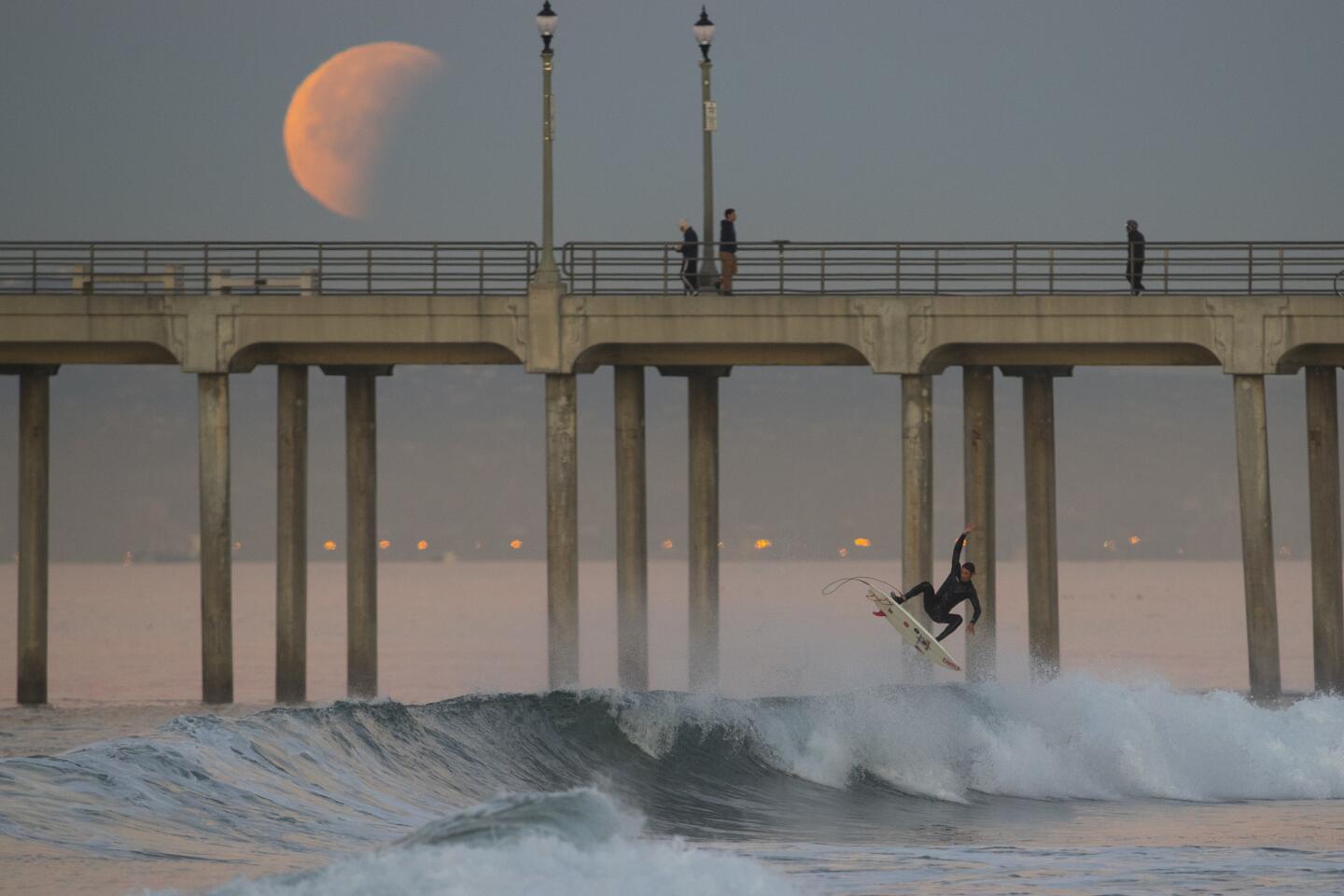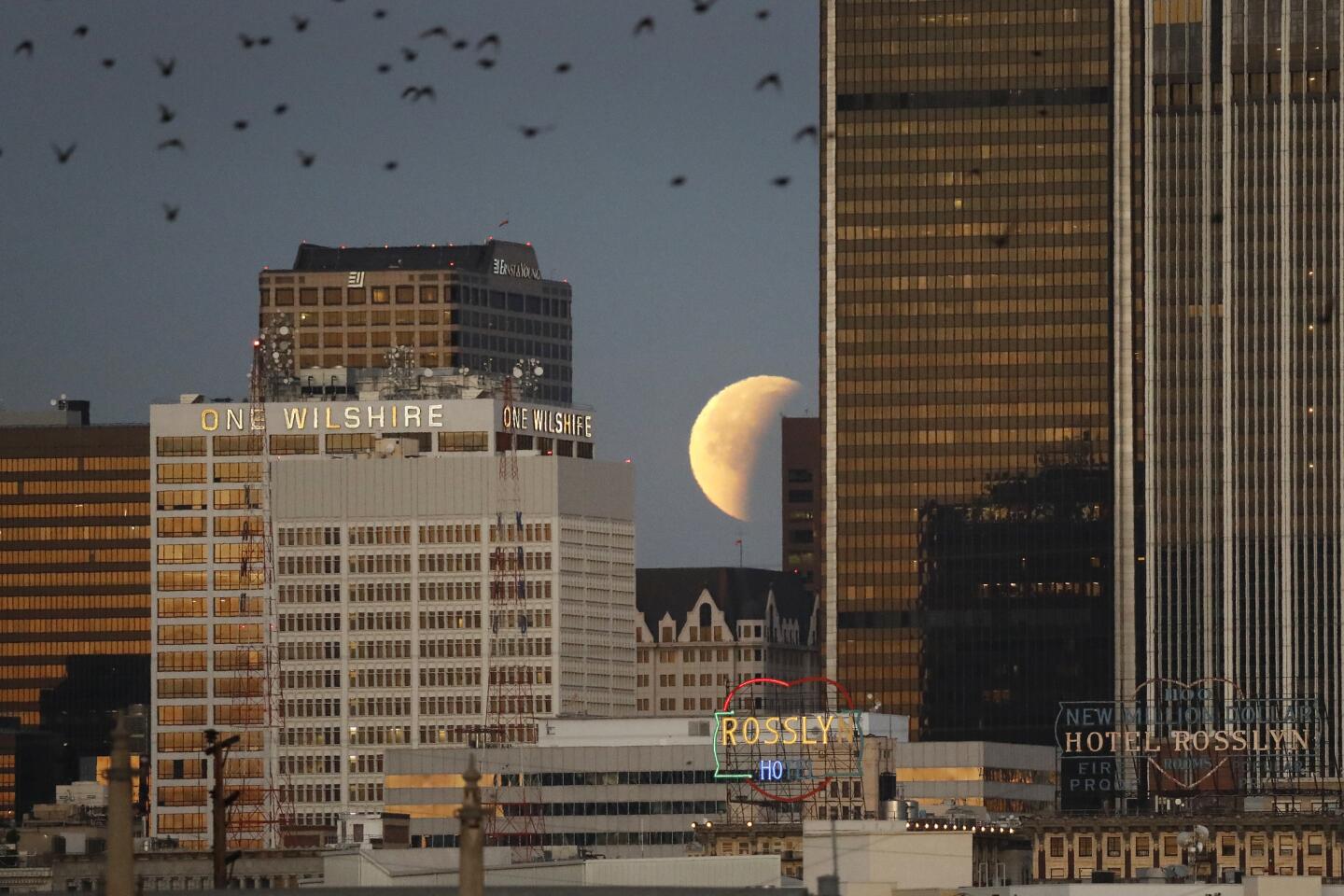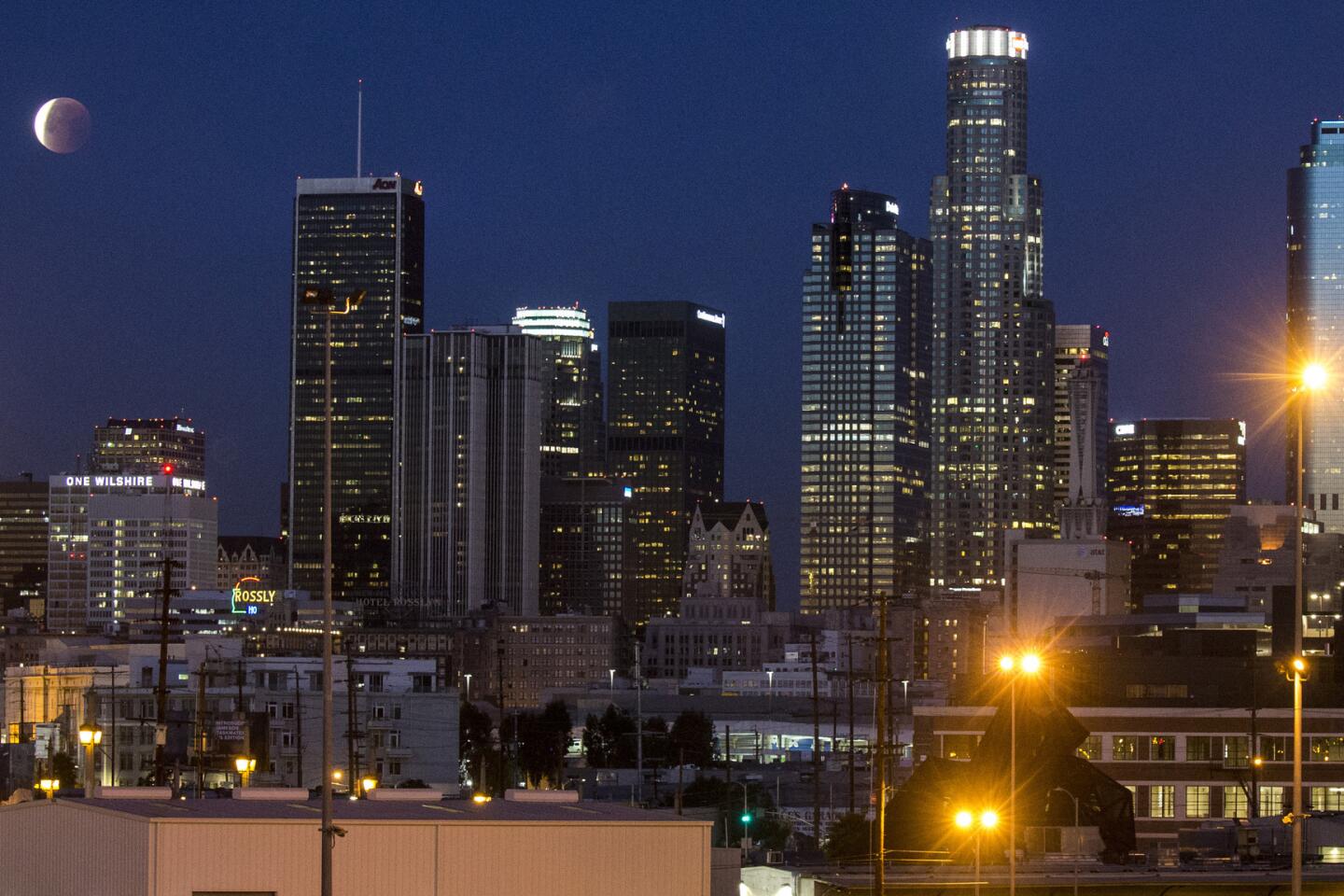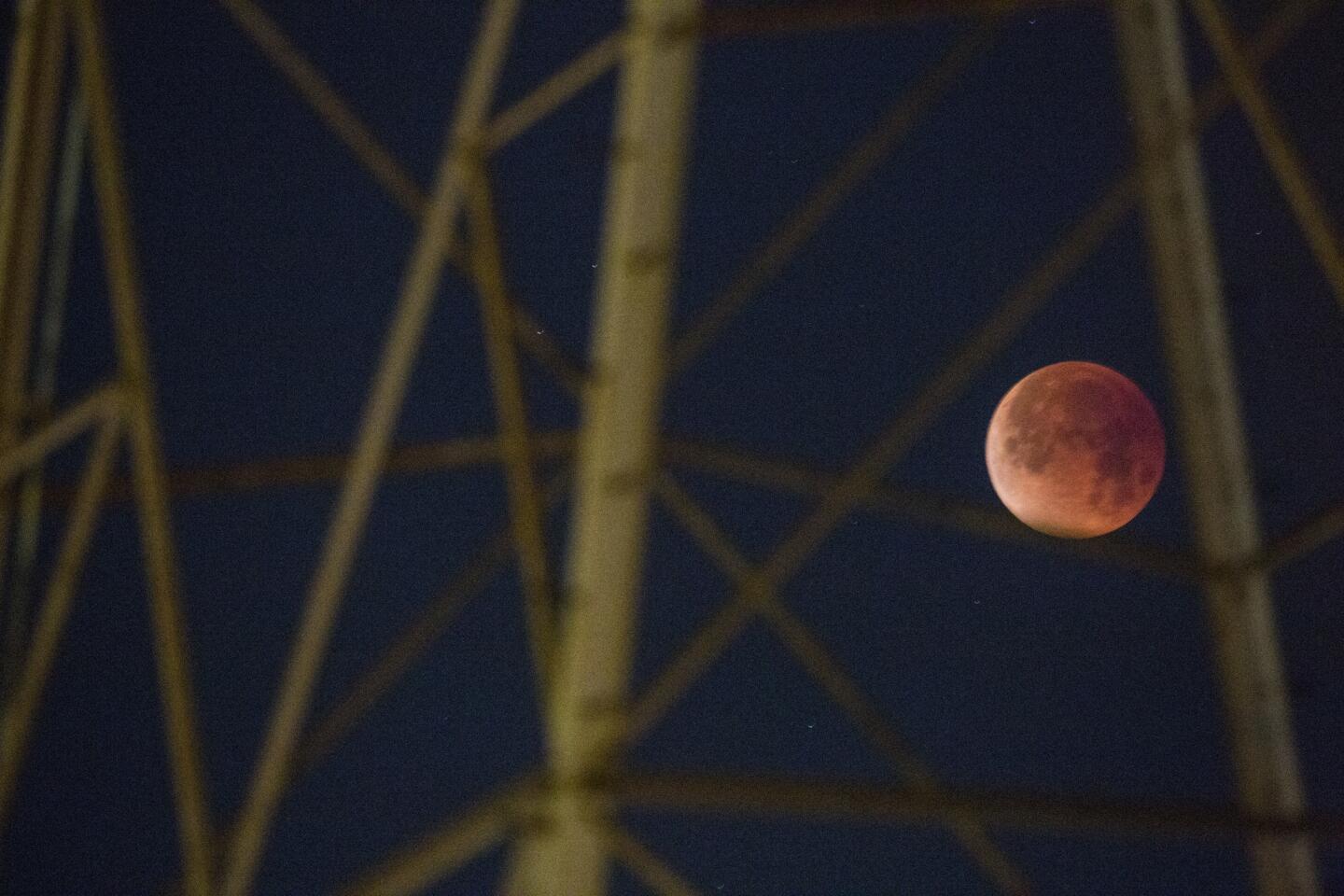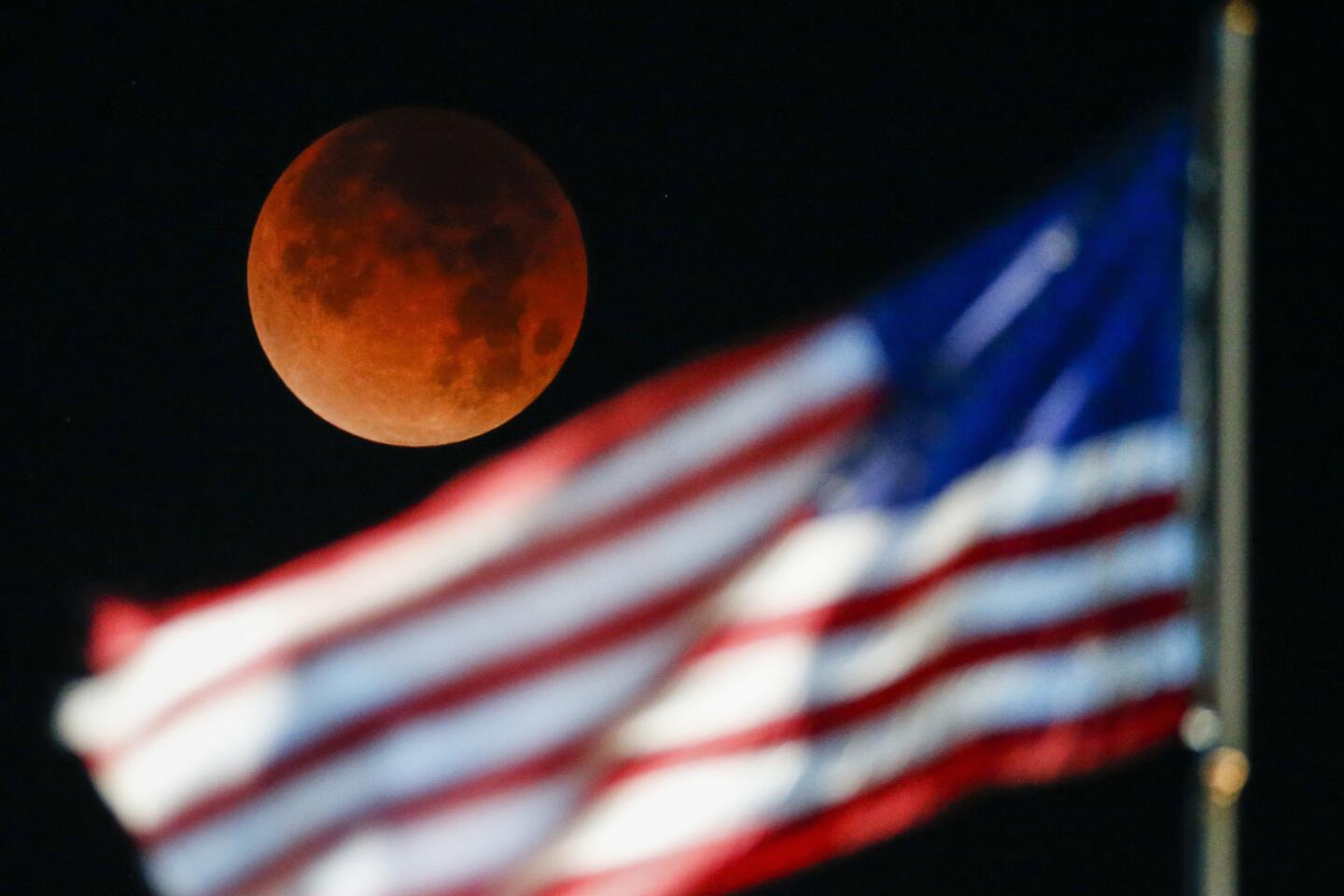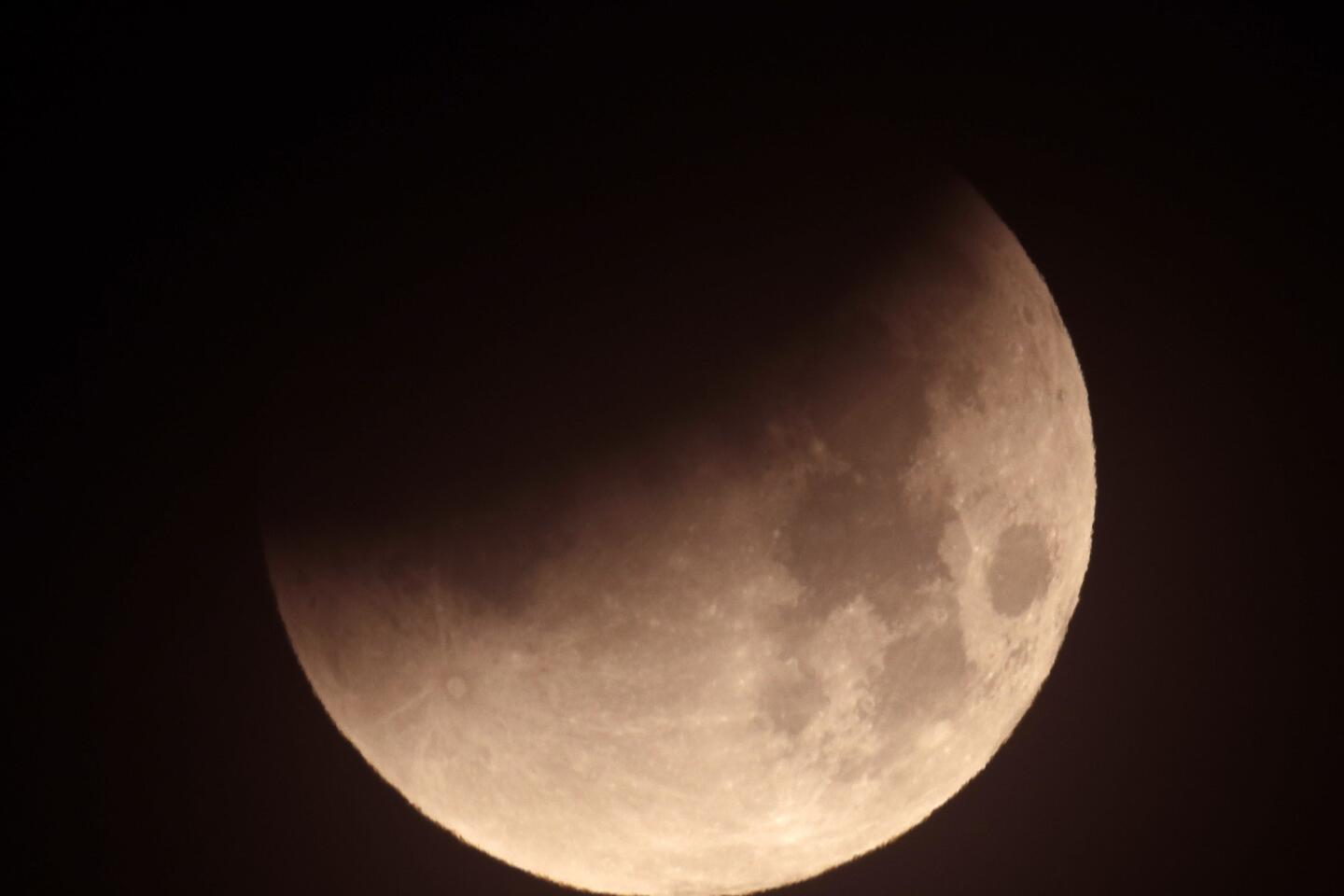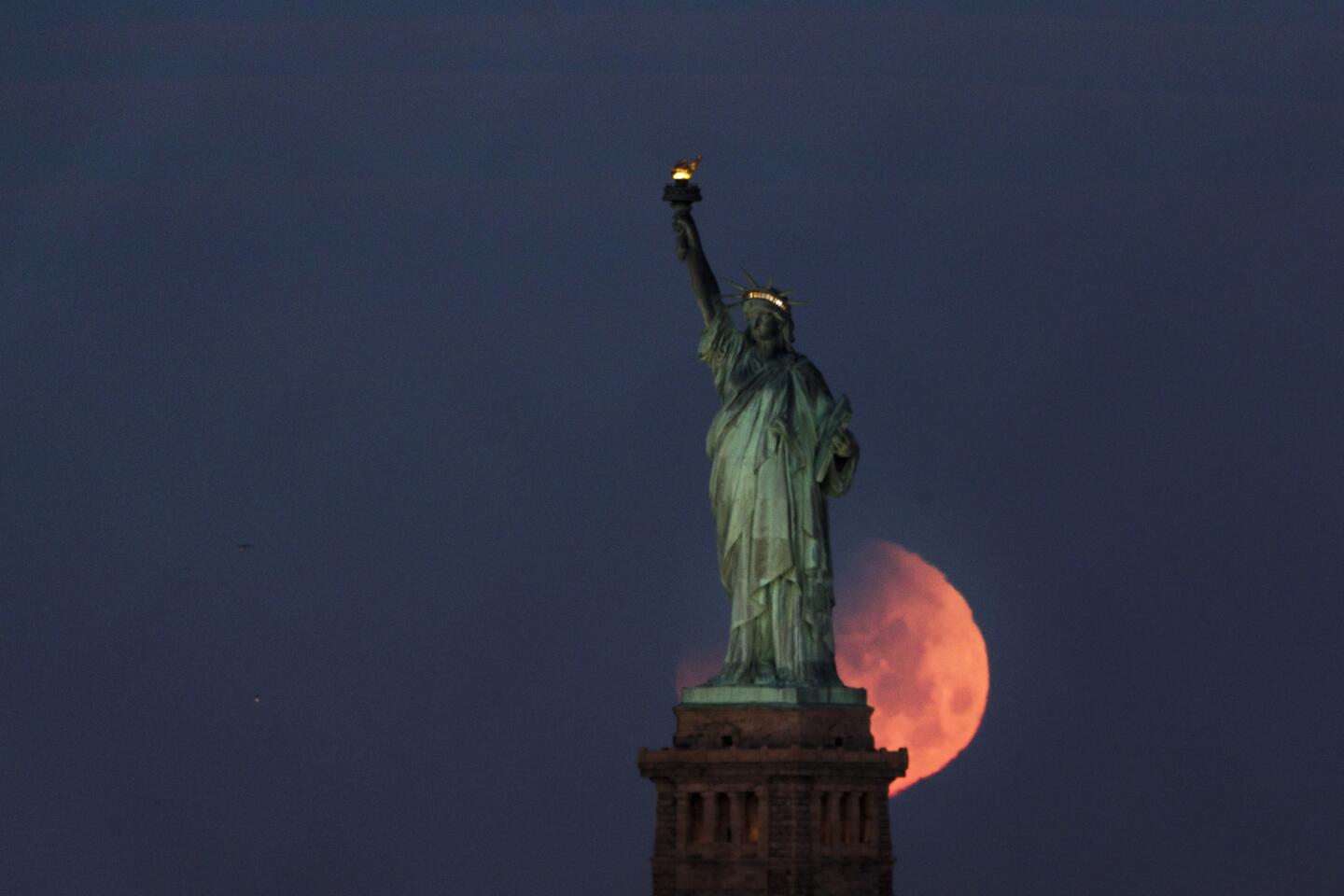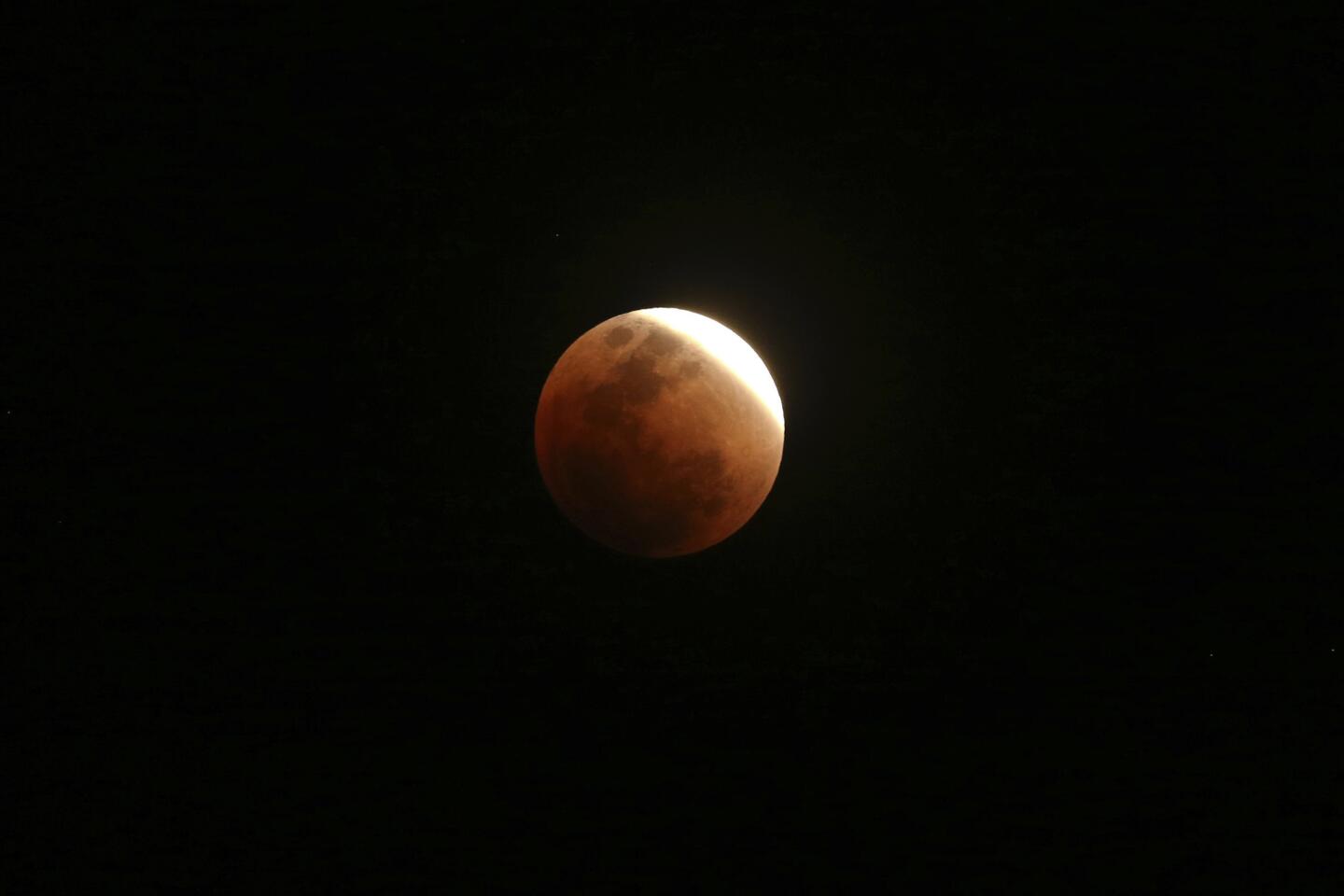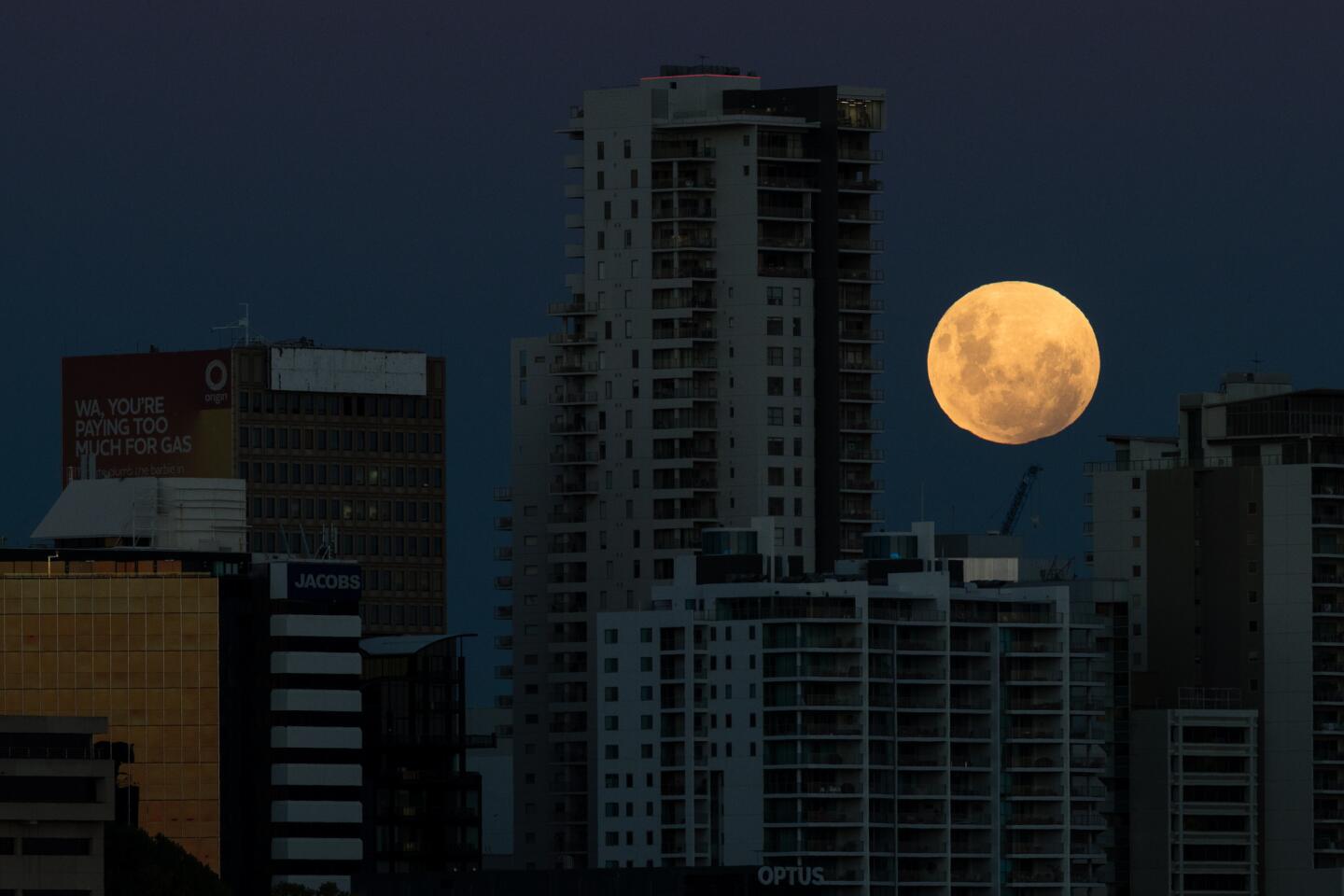Look up! Tonight’s total lunar eclipse is special in at least three ways
- Share via
Set your alarm clocks, sky watchers: There’s a total lunar eclipse coming in the wee hours of Wednesday morning and you don’t want to miss it.
Why this one is special
Wednesday morning’s lunar eclipse is special for three reasons.
First of all, it’s the first lunar eclipse since September of 2015. Those of us on the West Coast are in a prime position to see it — as long as we wake up before 6:07 a.m.
Second, the eclipse will occur during what has come to be known as a “super moon,” which means that the moon is closer to the Earth than usual and therefore bigger and brighter than average.
Our moon follows an elliptical path on its monthly journey around our planet. On average, it is 238,900 miles from the Earth, but it can get as close as 225,800 miles or as far as 252,000 miles.
Wednesday’s eclipse will occur just 27 hours after the moon hits the point on its orbit that brings it closest to the Earth. That means that the eclipsed moon will appear about 6% bigger than an average moon when it moves into the Earth’s shadow.
Finally, the eclipse occurs on what has come to be known as the “blue moon,” which means it is the second full moon of the month.
The Schedule

The celestial show technically begins at 2:51 a.m. PST, when the moon moves into the pale outer shadow of the Earth, known as the penumbra.
But if you want to maximize your sleep, consider getting up at 3:48 a.m. instead.
That’s when the “umbral eclipse” begins. At this stage, the moon starts to move into the deep shadow of the Earth, turning its face a deep, rusty red.
Totality, when the full face of the moon is in the Earth’s shadow, begins at 4:51 a.m. and ends at 6:07 a.m.
If you want to see the eclipse, but you don’t feel like you need to see ALL of it, you might just take a quick peek at the sky sometime during that window.
The moon sets at 6:54 a.m. After that, you won’t be able to see anything.

If you live on the East Coast, your best bet is to look up at 6:45 a.m. local time and watch for the Earth’s shadow to creep across the face of the moon at 6:48 a.m. EST.
Wait, the moon will turn red?
That’s right! The moon never appears completely black during a lunar eclipse. That’s because some light continues to pass through the Earth’s atmosphere, even when our planet is completely covering the sun from the point of view of the moon.
“Molecules in the Earth’s atmosphere scatter the blue photons more than red photons,” said Tammy Smecker-Hane, a professor of physics and astronomy at UC Irvine. “A lot of the red photons go directly through our atmosphere and hit the moon, while the blue ones get scattered in all different directions.”
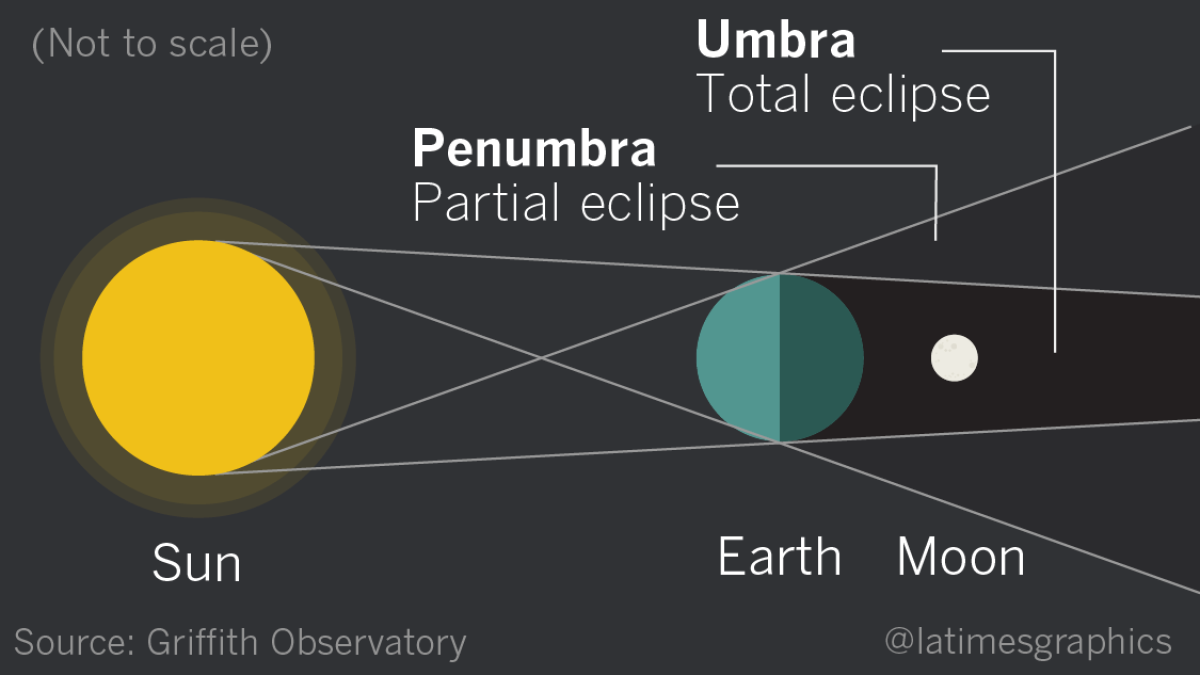
In fact, if you stood on the moon and looked at the Earth during a total lunar eclipse, you would see the planet as a black sphere with a ring of reddish-orange light all around it. This is the light of all the sunrises and sunsets on Earth.
The light from those sunsets and sunrises is what is lighting up the moon during a total eclipse.
So, with that in mind, set your alarm and look up Wednesday morning. I guarantee it will be cool.
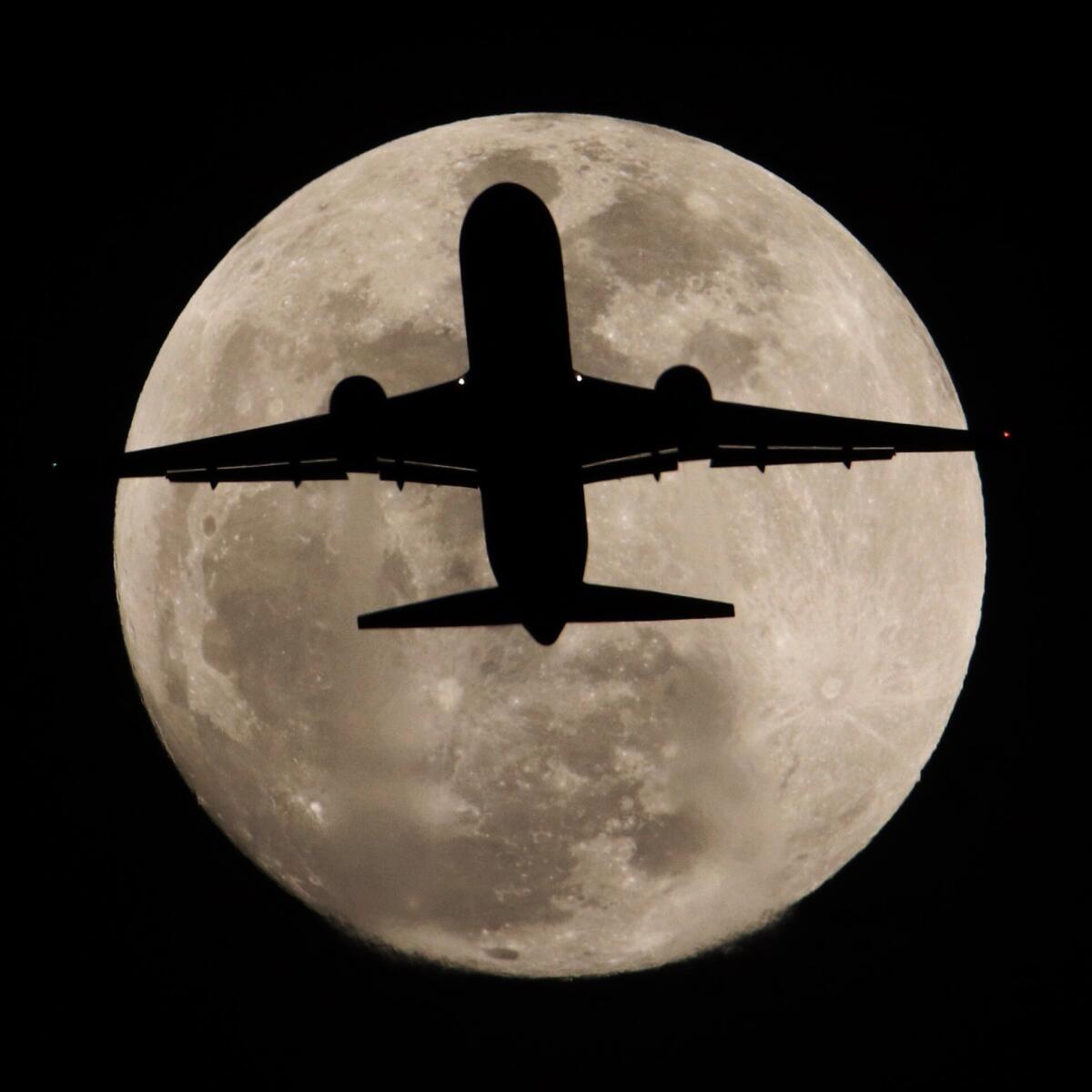
Do you love science? I do! Follow me @DeborahNetburn and "like" Los Angeles Times Science & Health on Facebook.
MORE IN SCIENCE
The search for life on other planets could get a boost from biosignatures
This dinosaur from Egypt is a really big deal — in more ways than one
Sleep cycle troubles may be early sign of Alzheimer’s disease
